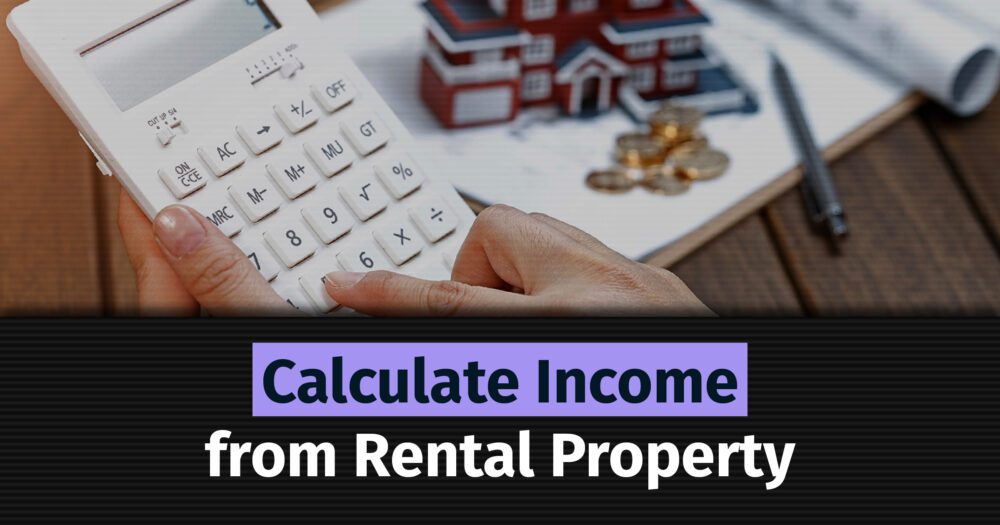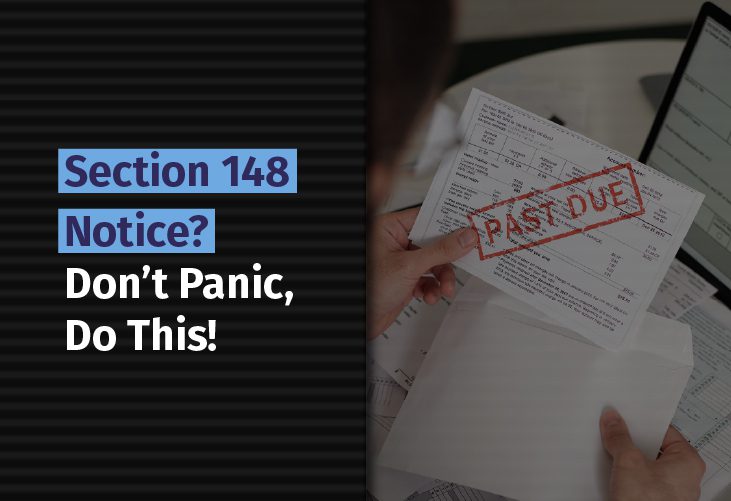If you own any residential or commercial property and rent it out, you’re required to declare the rental income under the head ‘Income from House Property’. in your income tax return. But the question is, how much tax do you need to pay on this rental income? The calculation is based on a formula defined in the Income Tax Act, which might seem complex at first glance. However, don’t worry—this blog will guide you through the steps of calculating income from your let-out property in a simple and easy-to-follow manner.
What is Let-Out House Property?
Letting out means renting out assets, such as a residential property, commercial space, or vacant land, to another party for a certain period in exchange for rent. It could be rented for the entire year or part of the year to generate rental income. A property that remains vacant or used for purposes other than earning rental income is classified as a deemed let-out property.
Read More: Income From Real Estate Investment Trusts (REITs) and its Taxation
Understanding Key Components of the Calculation
Annual Value
The Annual Value of a property is a crucial factor in determining taxable income from house property. It is basically the amount of rent the property can generate if you rent it out. There are two key elements of annual value:
Gross Annual Value (GAV)
GAV is higher of the Actual Rent received or the Fair Rent. It is the potential income that a property can generate if rented out during the year. Even if the property is vacant, the expected rent is considered for taxation.
Net Annual Value (NAV)
NAV is derived by deducting municipal taxes paid from the Gross Annual Value (GAV). This is the income on which tax is calculated.
Municipal Taxes
Municipal taxes are property taxes paid to the local municipal authority. These taxes can be deducted from the Gross Annual Value (GAV) to arrive at the Net Annual Value (NAV) of the property. However, this deduction can only be claimed if the municipal taxes are paid by the property owner. If the tenant has made the payment, the owner cannot claim this benefit. Further, it is not necessary that the municipal taxes should pertain to that financial year only. Both old and new tax regimes allow deduction of Municipal taxes paid.
For year-round tax planning and filing, consult a Qualified Financial Advisor
Standard Deduction
A fixed deduction of 30% of the Net Annual Value (NAV) is allowed as a standard deduction. The intent behind providing this benefit is to cover repair & maintenance expenses and other property-related expenses. This deduction is allowed regardless of whether these expenses have actually been incurred. Both old and new tax regimes allows standard deduction.
-
Interest on Home Loan
Interest paid on repayment of a loan that is borrowed for purchasing, constructing, or renovating a house property can be claimed as a deduction. You can claim the deduction of the actual interest amount paid.. Both old and new tax regimes allow deduction of interest paid on a home loan for let-out properties.
-
Principal repayment
Under the old tax regime, principal repayment of up to ₹1.5 lakh p.a. is deductible under Section 80C. This deduction is not available in the new tax regime.
-
Loss Set-off
Under the old tax regime, you can set off loss from house property against income from any other sources, such as salary or business income. The set-off is restricted to ₹2 lakh per annum. However losses from let-out property cannot be set off against income from other heads under new tax regime.
-
Carry-Forward
Under old tax regime you can carry forward the excess loss (more than ₹2 lakh) for up to next 8 years. The loss can be set off only against income from house property in future years. There is no scope for carry forward of losses in the new tax regime.
Step-by-Step Guide to Calculating Income from Let-Out Property
Let’s break down the process into a series of simple steps:
Step 1: Determine Gross Annual Value (GAV)
Step 2: Deduct Municipal Taxes
NAV = GAV – Municipal Taxes
Step 3: Apply Standard Deduction
Standard Deduction = 30% of NAV
Step 4: Deduct Interest on Home Loan
Step 5: Calculate Income from House Property
Income from House Property = NAV – Standard Deduction – Interest on Home Loan
Case Scenario for Calculation of Income (As per old tax regime)
Mr. Rahul Roy, owns a residential flat in Mumbai. He purchased this property in 2022, financed it with a home loan, and has been renting it out since April 2024. For the financial year 2024-25, Rahul needs to calculate his income from the let-out property to report in his income tax return.
Property Details for FY 2024-25:
- Location: Mumbai
- Monthly Rent Received: ₹30,000
- Annual Rent Received: ₹3,60,000 (₹30,000 × 12 months)
- Municipal Taxes Paid: ₹15,000 annually
- Interest Paid on Home Loan: ₹3,50,000 annually
- Year of Purchase: 2022
Now, let’s calculate the taxable income:
Step 1: Calculate the Gross Annual Value (GAV)
The first step is to determine the Gross Annual Value (GAV), which is the total rent Rahul receives in a year.
Monthly rent received: ₹30,000
Annual rent received: ₹30,000 × 12 = ₹3,60,000
Since there is no vacancy or other deductions that could reduce the rent, therefore the GAV is ₹3,60,000.
Step 2: Deduct Municipal Taxes Paid
Municipal taxes paid to the local authority are fully deductible. In Rahul’s case, he has paid ₹15,000 as municipal taxes for the year.
Net Annual Value (NAV) = GAV – Municipal Taxes
NAV = ₹3,60,000 – ₹15,000 = ₹3,45,000
Step 3: Apply Standard Deduction (30% of NAV)
You are allowed a fixed deduction of 30% on the Net Annual Value to cover repairs and maintenance costs.
Standard deduction= 30% of ₹3,45,000 = ₹1,03,500
Income before interest on home loan = NAV – 30% deduction
Income = ₹3,45,000 – ₹1,03,500 = ₹2,41,500
Step 4: Deduct Interest on Home Loan
One of the major benefits of owning a let-out property is the deduction allowed on home loan interest under Section 24(b) of the Income Tax Act as there is no upper limit for claiming deduction on let-out properties. Rahul has paid ₹3,50,000 as home loan interest in the financial year 2024-25.
Net Income from Let-Out Property = Income before Interest – Interest on Home Loan
Net Income = ₹2,41,500 – ₹3,50,000 = -₹1,08,500 (Loss)
Final Result: A Loss of ₹1,08,500
This loss can be carried forward by Rahul for the next 8 years and set off against income from other house properties or rental income in future years, as per the applicable tax laws.
Conclusion
By understanding the basic components involved in calculating income from a let-out house property, you can easily compute your taxable income. The available deductions should be leveraged to reduce your tax liability. Ensure that you maintain accurate records of your payments and deductions to experience hassle-free tax compliance.
A qualified financial advisor can help you in computing the income from let-out property correctly. To optimise your taxes, download the 1 Finance app and book a consultation with a qualified financial advisor for a seamless, hassle-free tax planning experience.






